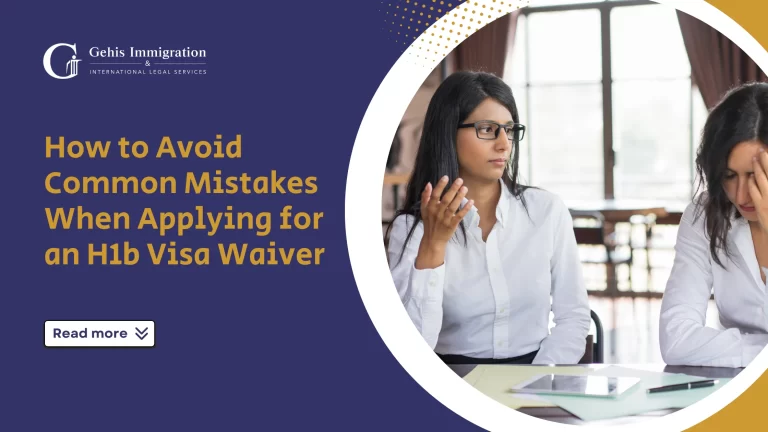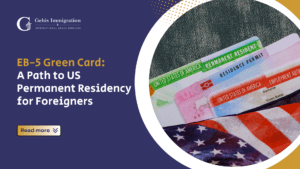Applying for an H1b visa waiver lets employers hire foreign workers for specialty occupations like STEM on a temporary basis. It is a popular choice for employers seeking skilled professionals from other countries to fill specific job roles. The H-1B visa program is essential for addressing workforce shortages and attracting global talent to contribute to the U.S. economy.
The H-1B visa is typically valid for three years, with the possibility of an extension for an additional three years. After six years, the visa holder must either return to their home country or transition to another visa status. However, certain circumstances may allow for an extension beyond the six-year limit.
One important aspect of the H-1B visa is the waiver process, particularly the “H-1B cap exemption” or “H-1B cap waiver.” This exemption allows employers to hire foreign workers who are subject to the annual H-1B visa cap without counting toward that cap. Workers employed by universities, related non-profits, or research organizations often receive this benefit.
H-1B Visa Waiver Process
The H-1B visa waiver process is significant for individuals who have reached the six-year maximum stay on an H-1B visa and wish to continue working in the United States beyond this limit. The waiver allows certain H-1B holders to extend their stay beyond six years, and it is often referred to as the “H-1B cap exemption” or “H-1B cap waiver.”
Components of the Waiver Process:
The waiver is typically available to H-1B workers employed by institutions of higher education, non-profit organizations affiliated with higher education institutions, or research organizations. These employers are considered cap-exempt, meaning they can hire H-1B workers without being subject to the annual cap on H-1B visas.
The employer must file a new H-1B petition with the United States Citizenship and Immigration Services (USCIS) to request the waiver. This involves providing evidence of the employer’s qualification for cap exemption and the H-1B worker’s eligibility.
If the waiver is granted, the H-1B worker can continue working for the exempt employer beyond the six-year limit. The duration of the extension depends on the specific circumstances and the nature of the employment.
The H-1B visa waiver is important for both employers and foreign workers as it enables continued employment in the United States beyond the initial six-year period. This process acknowledges the importance of skilled foreign workers in specific sectors. It allows them to contribute to the U.S. workforce in specific areas, such as education, research, and non-profit organizations.
Common Mistakes to Avoid in H1B Weaver
When pursuing an H-1B visa, it is important to steer clear of common mistakes that could jeopardize the application process. Essential for success: accurate and complete documentation including passports, LCAs, education credentials, and job offer letters. Thorough preparation is key, involving a meticulous review of USCIS guidelines, adherence to checklists, and the inclusion of translations for non-English documents.
Equally important is a keen awareness of deadlines, with the H-1B filing period typically commencing on April 1st each year. Setting reminders and maintaining organizational efficiency is vital to avoid missing key dates, especially considering the potential implementation of a lottery system if the cap is quickly reached.
Accuracy in the information provided on the application is paramount, emphasizing the need for truthful and precise details. Double-checking all information before submission and seeking a second opinion can prevent errors. Staying informed about updates or changes in immigration policies is crucial, necessitating regular checks on the USCIS website and seeking legal advice when necessary to navigate any alterations effectively. By proactively addressing these considerations, applicants can enhance the chances of a successful H-1B visa application process.
Best Practices for a Successful H-1B Visa Waiver Application.
For a successful H-1B visa waiver, follow best practices starting with consulting an experienced immigration attorney. The benefits of professional guidance cannot be overstated, as attorneys possess in-depth knowledge of immigration laws and can provide valuable insights tailored to individual cases.
Choosing a reliable attorney is paramount. Look for professionals with a proven track record in handling H-1B visa cases, and consider referrals or reviews to gauge their reputation. The right attorney can streamline the process, address potential challenges, and increase the likelihood of a favorable outcome.
Thoroughly reviewing the application before submission is another step. Ensure that all required documents are accurate, up-to-date, and aligned with USCIS guidelines. Self-auditing the application helps catch any errors or omissions that could lead to delays or denials.
Seeking feedback from knowledgeable individuals, such as colleagues or mentors familiar with the immigration process, can provide valuable insights. They may offer suggestions or identify areas that need clarification, strengthening the overall application.
Being aware of individual circumstances is essential. Making the application to personal situations demonstrates a clear understanding of the unique factors involved. Proactively handling red flags like gaps or visa changes can strengthen your case and ease concerns.
Final Word
It is paramount to recognize the importance of diligence and preparation throughout this process. Promoting proactive approach and best practices enhances H-1B visa waiver process for a successful outcome. Preparedness and diligence aid in navigating H-1B visa waiver complexities, boosting success chances and skill contribution.
The H-1B visa waiver application process is a complex undertaking that demands careful consideration and attention to detail. Common Mistakes like wrong documentation, missed deadlines, inaccurate info, or ignoring policy changes can cause problems.





